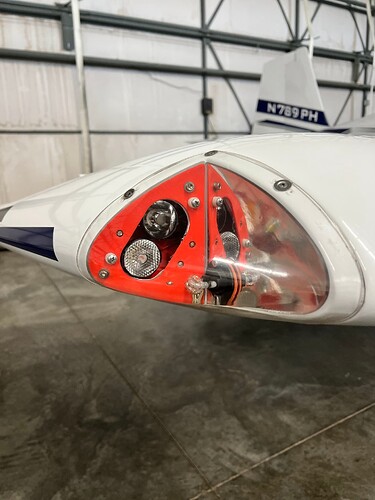Hi Pete,
Its a relief to see you’re a seasoned pilot. We lose far too many in my sate who are not (and several who are). In particular, those who skimped on attaining and maintaining their endorsements and proficiency.
I live at a sky park and own several aircraft, including a RV-4, 8 & about to complete a Harmon Rocket II. 4200 hrs PIC in GA.
I linked the best common PAR36 LED replacements for their milspec standards, hardened build construction, including high vibration resistance, transient suppression, integrated heat sinks and fast current throttling to prevent overheating… among a myriad of other PMA’d requirements. One of my local flying buddies founded and owns AeroLed, who supplies several large OEM’s and military applications.
IMO, the option you linked has been far surpassed in sheer luminosity by several other options. Nor have I ever heard of them before. A quick read shows no mention of the driver build, over-volt protection, heat management via current throttling or protection from transients. If your flying involves only from improved fields, then that may be enough, sans all the safety features I would never fly without. I assume you are using the 60A Mitsubishi alternator?
I often fly at night. Sometimes into unimproved fields surrounded by steep mountainous terrain, obstacles galore, no go-around options and zero ambient lighting. So there is no tolerance to lose illumination for being cheap. I have never seen someone skimp on lighting (whether cockpit. marker or landing), especially at the level of an RV. I know more than 100 RV and Harmon Rocket owners, with +45 on my field alone. Skimping here is akin to putting the cheapest Walmart tires available on a $2 million super car. I once KNEW people who had electrical fires caused form shorted, improperly rated circuit boards, some resulting in total loss of life and having been burned alive in flaming AV gas after a forced landing. People can burn while enveloped in flame for up to 10 minutes before death occurs, so hopefully smoke inhalation and asphyxiation takes them long before .
I hope you’ll take my remarks into consideration while making your decision. My experience in GA, and those who I surround myself with, have seen far too many absolutely HORRIBLE fatalities caused by those who threw safety to the wind in order to save a buck.
I agree 5 - 5.5 K to be a great color temp for illuminating a wide variety of terrain. 6 - 6.5K is only marginally worse at color rendition from the air but improves contrast while in motion. This is why most AG aircraft seem to prefer higher K while dusting at night. The downside is it tends to wipe out peripheral night vision during taxi, causing a tunnel vision effect. Everyone’s eyes are different so you might have a different experience.
If you search, I threw together a light-bar I posted on this forum, using purpose built 14VDC 13.5A drivers for the application. I didnt post this, but after what I learned from that build, I built a custom lighting system for a friends RV7 driving 16 XML-2 (8 in each wing on polished copper backplanes). Output @20,000 lumens OTF. His 7 is stretched, has a custom blended high performance airfoil and powered by Lycon 400hp IO540. He mostly flies daytime VFR, and at the time the other options weren’t available. He had no intentions of ever using the lights unless landing after sunset. He competes in the experimental category at Oshkosh and won 2nd overall. Would have won first, but arrived late without enough time to detail the plane after a long cross country. The lights were just another bling gimmick for people to ogle over through the light covers, along with the rest of his extraordinary build effort. For giggles, he also threw together this little hot rod and later sold it. RV-3 - Van's Aircraft Total Performance RV Kit Planes
I do NOT recommend using the LED drivers I mentioned in any build what-so-ever, and I only mentioned them as a point of reference. After all, they cut out @15.1VDC to protect the LED array from over-volt and built to suppress transient spikes from the alternator. They are beefy linear drivers, which will dim the emitters slightly when throttled to idle during short finals and extended taxi, to preserve the battery (Odyssey PC680, when the alternator isnt producing max current above 1200 engine RPM). If I could wave my magic wand, Id imagine something using that driver powering 4 XHP70HI emitters (32,000 lumens out the front), utilizing the thermistor and rheostat options for temp management and cockpit dimmable landing light options. Master arm switch > SPDT switch to select between rehostate and 100% power through an inline 1hZ strobe circuit for inflight collision avoidance. Small NACA ducts under each wing to channel cooling air to the heat sinks and light cavities. Depending on your skills, if you can mount the package in the cowl between the prop and air intake, you’ll avoid voltage loss over long runs of copper wire to the wings and save weight while simplifying cool air ducting to the lights. I have seen the air intake lowered on an RV build to accommodate 2 PAR 36 lights with tremendous ramp appeal!
Stay safe and please don’t become another tragedy that easily could have been avoided. Sorry for the sermon, but at least now you know why. Sorry my post was so long!

